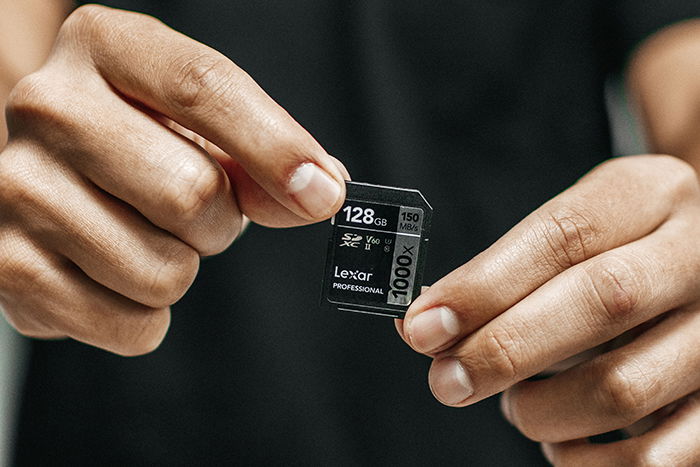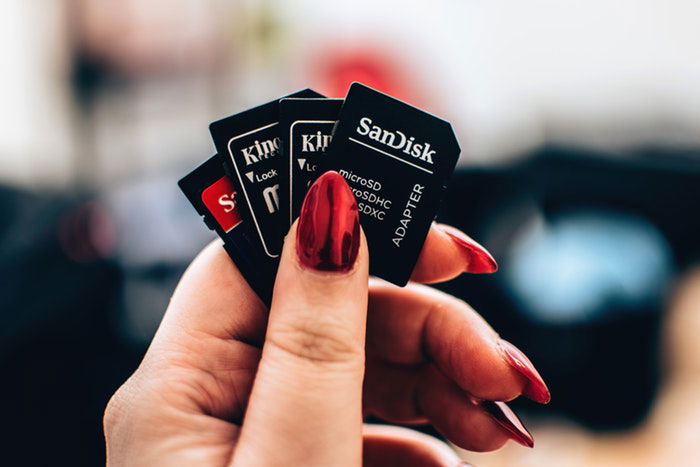How to Recover Deleted Photos From an SD Card
You might think it’s impossible to recover deleted photo from an SD card. But that’s not the case.
We all know the feeling when we delete something we shouldn’t have. Your heart stops and your blood runs cold. There’s a moment of disbelief, then a scramble for a solution.
Thankfully, there are a couple of solutions when you wrongly delete photos from your SD card. You have to act fast, and they are not always 100% successful. But there is action you can take to remedy the disastrous situation.
Now we’ll walk you through the best ways to recover deleted photos from an SD card. Keep reading to find out how to get your deleted photos back.


If you buy a product through one of our referral links we will earn a commission (without costing you anything). Prices last updated on .
As an Amazon Associate, I earn from qualifying purchases. Product prices and availability are accurate as of the date/time indicated and are subject to change. Any price and availability information displayed on Amazon at the time of purchase will apply to the purchase of this product.
Recover Deleted Photos: Is Image Loss Permanent?
You might think that when you delete a photo from an SD card, it’s gone for good. But often, the image files do not truly disappear util they are overwritten by new data.
The SD card might appear empty when viewed on a computer via a card reader. But the information is often still there, laying in secret. If this is the case, then it is possible to recover your lost photos.
Image loss can also happen through damaged memory cards and corrupted files. These situations are slightly more severe, but it’s still sometimes possible to retrieve the lost data.
We should say that some deleted photos are gone for good. If the data has already been overwritten or the files were deleted a long time ago, there isn’t much hope of recovering them.
But if you act fast when the tragedy happens, you can recover the lost photos without much trouble.
That’s exactly what we’ll explain in the rest of this article. We have two methods of recovering deleted photos on a memory card, including different file types like SD, QXD, and CF. We also have some extra tips for keeping your digital files safe and sound.
 © Luis Quintero
© Luis Quintero
How to Recover Deleted Photos From Memory Cards
The likelihood of recovering deleted photos depends on how those photos were deleted and what has happened to the memory card since.
First, with any data loss, stop using the memory card immediately. You can only recover images if that data hasn’t been overwritten yet. If you keep shooting on that card, you’ll lower the odds of successfully recovering that data.
Memory cards use something called a File Allocation Table (FAT). This allows you to access those files. When formatting a memory card, that FAT is deleted. But the data for the individual photos remains until the card is overwritten with new data.
That’s why your odds of recovery are pretty good if you’ve formatted the card in the camera by mistake… as long as you haven’t taken any new images with the same card since then.
You can also lose data through a corrupt memory card, which can be trickier to work with but not impossible. Physical damage to a card can also mean lost images and tends to be among the toughest to recover data from.
That’s one of the reasons why it’s a bad idea to buy cheap, off-brand cards. I once washed and dried an SD card left in a pocket, and all the data was still intact.
There are two main options for getting back those lost photos. The best one depends exactly on how you lost those photos in the first place.
The first solution is to use data recovery software. This option is the simplest and most affordable. It’s ideal for formatted cards, accidental deletions, and some card errors.
The second is to send the card to a data recovery service. This is the priciest solution, often with three-digit price points. In some cases, like with damaged cards, it may be the only chance of recovering that data.
Option 1: Use a Data Recovery Software
 © Lisa Fotios
© Lisa Fotios
Step 1: Stop Using the Memory Card Immediately
Whenever you lose data from a memory card, stop using the card right away. This increases your odds of recovering the data.
Don’t take any more photos with the card. And don’t use the card in a computer until you are ready to start the recovery process.
Step 2: Choose a Photo Recovery Software
There are dozens of different data recovery programs out there. They come at varying price points with different features. Start by checking if the brand of the memory card you are using has a program.
These are often free and tailored for your memory card. For example, Lexar has the Lexar Recovery tool.
Your memory card company might not have a software program. There are still plenty of good programs out there that can help you get back your lost data.
We’ve selected a few of the very best data recovery options below. But you can also see our full article on the best free photo recovery software by clicking on the link.
EaseUs: This program’s free version will recover 2 GB of files before you have to pay for the full version. It’s compatible with Mac as well as Windows. It works with formatted, corrupt, and partitioned memory cards. Stellar Photo Recovery: Designed for both Mac and Windows, Stellar Photo Recovery is an easy-to-use program. It can recover some deleted files as well as corrupt files. It’s reasonable at $49.99 for a one-year subscription. You can download the program for free and scan your media first. That way, you don’t waste money if the program can’t recover anything. Wise Data Recovery: A great option if you’re on a tight budget, Wise allows you to recover 2 GB worth of data before having to sign up to a paid plan. It can recover lost data from computers, USB devices, and memory cards. You can also recover other types of files, including documents, videos, and even audio files. IObit Undelete: This recovery software is completely free. It isn’t as powerful as the paid programs, which means a lower success rate. But it’s still capable of recovering deleted photos from a memory card. It’s “deep scan” features help you retrieve data that’s been lost of a long time.
Step 3: Download the Program and Select the Drive to Scan
Once you’ve selected a data recovery program, download and install the program to your computer. Every program will have steps that are a bit different, but they all follow the same idea.
With the SD card in a card reader, choose the type of file you are looking to recover. Choose the drive to run the recovery on (the SD card), and follow the on-screen instructions to start the scan.
Your memory card might still have folders intact. Choose the folder where you stored the deleted images instead of the root or main drive.
Step 4: Save Any Recovered Files
The scan may take some time. Once it’s finished, you can choose which photos to download and save, or you can choose to rescue all. Select the files you want and choose where to save them.
Remember to save them somewhere safe and back them up. You don’t want to repeat the process.
Option 2: Use a Data Recovery Service
Software is the simplest, most affordable way to recover files. But sometimes you need more help. The software might not work, or the memory card might be physically damaged.
In these situations, sending the card to a data recovery service may be the only way to recover the lost data.
If the chip in the card is intact, the damage might still render the card unreadable by a card reader. These types of companies have the equipment to read the damaged card.
Several companies specialize in data recovery services. You mail in the damaged card and get a quote. If you choose to proceed, they’ll work their magic and send those files back to you.
Some electronics stores also offer data recovery services. Check with local stores to see if they offer the service. Some offer in-store recovery. In some cases, you might still need to ship your memory card elsewhere to complete the recovery.

How to Prevent Losing Deleted Photos
Losing data is a headache. How can you prevent ever losing images again in the future, wasting time and money on data recovery?
Some accidents are inevitable. But many of them are preventable with proper memory card care and backups.
Here’s what you can do to prevent losing data again.
Keep Your Memory Cards Safe
You can’t protect your cards against deleting photos by accident. That’s just human error. But you can avoid damage by using a strong and reliable memory card case.
Every photographer needs at least one case for keeping their memory cards safe while on the job. It also reduces the chance losing the physical memory card, which is another heartbreaking experience.
Check out our list of the best memory card cases to find one that meets your needs.
Create a System for Storing Memory Cards
Often, you might lose data through accidental deletion. Or you might even misplace an entire memory card.
Create a designated spot for empty SD cards and a separate spot for SD cards that you have already used.
That will help avoid those accidental formats. Use a memory card case or a camera bag with dedicated card slots.
Create a Backup Plan
Backing up your images as soon as possible should be a nailed-in part of your workflow. You want it to become like second nature, so you never miss this step.
You should also save your photos in two places at once to reduce the risk of losing data.
Try using cloud storage along with an external hard drive. Or you can use two different external hard drives.
If you have a camera with dual memory card slots, you can start the dual backup from the moment you take the photo. Set up the files to write to both cards or for one card to take RAW and the other JPEG.
Double-Check Before You Delete
Don’t hit the format option first. Make sure all your images have transferred over to your computer as well as your backup location.
Use a Memory Card from a Reputable Company
Don’t fall for the cheap no-name memory cards. Besides being slow, they can even increase the odds of corrupted files and memory card errors.
Stick with the major name brands. They are fast, more reliable, and much less prone to data loss. They also have a better success rate when used with data recovery software.
See our article on the best SD cards for photographers.
Consider Using Tough Memory Cards
Even from within the same brands, not all memory cards are created equal. Some memory cards like the SanDisk Extreme and Sony Tough are very tough.
They’re designed to withstand drops, dust, and moisture. These cards are ideal for waterproof cameras and shooting in harsh conditions.
Avoid Cheap Memory Card Readers
Along the same lines, make sure your card reader is from a reputable company as well.
The cheap options could even lead to corrupt cards. Cheaper card readers are also more likely to lose files when disconnecting from a computer. It’s not worth the risk, and paying a little extra now will save your time, trouble, and money in the future.
We have a dedicated article to the best card readers for photographers.

Conclusion: How to Recover Deleted Photos From a Memory Card
Data recovery software can be the simplest and most affordable option to recover deleted photos from an SD card. It can help you restore deleted photos and videos. The pricing is less than a service, and many programs are often straightforward.
The toughest data recovery cases may need data service. You’ll have to send your memory card for the experts to handle.
Prevention won’t help you recover photos that you’ve already lost. A few best practices in your photography workflow can help ensure you don’t lose any more files in the future.
Looking for more interesting info on memory cards? Check out our posts on the best options for memory card holders and how many photos different memory cards can hold next!


If you buy a product through one of our referral links we will earn a commission (without costing you anything). Prices last updated on .
As an Amazon Associate, I earn from qualifying purchases. Product prices and availability are accurate as of the date/time indicated and are subject to change. Any price and availability information displayed on Amazon at the time of purchase will apply to the purchase of this product.
By accepting you will be accessing a service provided by a third-party external to https://kendallcameraclub.org/
